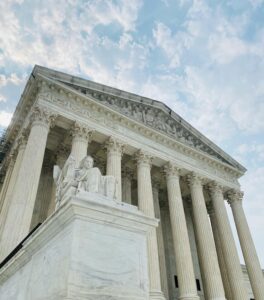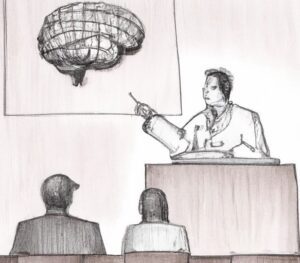Abstract:
This article aims to explore and analyze the effects of motorcycle helmet laws in the United States. By examining the impact of these laws on various aspects, such as road safety, injury rates, healthcare costs, and personal freedoms, this paper provides a comprehensive assessment of the benefits and drawbacks of motorcycle helmet legislation. Reviewing existing literature, statistical data, and case studies, this paper offers insights into the efficacy of helmet laws and their potential implications for public health and policy considerations.
- Universal Helmet Laws:
- States with universal helmet laws require all motorcyclists, regardless of age, to wear helmets while riding.
- Examples of states with universal helmet laws include California, New York, and Florida.
- Partial Helmet Laws:
- States with partial helmet laws have age-specific requirements for helmet usage.
- Typically, these laws mandate helmet use for riders of a certain age or younger, while older riders have the option to ride without a helmet.
- For instance, in states with partial helmet laws, riders under the age of 18 or 21 may be required to wear helmets.
- Examples of states with partial helmet laws include Texas, Pennsylvania, and Ohio.
- No Helmet Laws:
- Some states have no helmet laws, which means that motorcycle riders of all ages can legally ride without helmets.
- In these states, individuals have the freedom to choose whether or not to wear a helmet.
- States with no helmet laws include Iowa, Illinois, and New Hampshire.
Motorcycle helmet laws have been contentious in the United States, eliciting debates over personal freedoms, public safety, and government intervention. This section provides an overview of the topic, highlighting the significance of motorcycle helmet laws and their historical context in the United States.
Historical Context of Helmet Laws in the United States
A complex and evolving landscape characterizes the history of motorcycle helmet laws in the United States. Here is an overview of the key milestones and developments:
Early 1900s:
Motorcycles gained popularity, and helmets were not widely used or mandated.
Some military organizations, like the British Army, introduced helmets for motorcycle dispatch riders.
1930s-1940s:
Helmet usage increased among civilian motorcyclists, driven by safety concerns and technological advancements.
The Snell Memorial Foundation was established in 1957 to develop helmet safety standards.
1960s:
Rising motorcycle fatalities and injuries led to increased attention on helmet safety.
In 1966, the federal government passed the Highway Safety Act, encouraging states to adopt helmet laws and set minimum safety standards.
1970s:
Many states began implementing mandatory helmet laws amid concerns over rising motorcycle accident rates.
In 1975, the federal government passed the “Buchanan Amendment,” which prohibited the Department of Transportation from withholding funds from states that chose not to enact helmet laws.
1980s-1990s:
Public attitudes shifted, and opposition to mandatory helmet laws grew.
In 1983, the Motorcycle Helmet Law Repeal Act allowed states to opt out of the federal mandate to have helmet laws.
Several states repealed or weakened their helmet laws during this period.
2000s:
Some states reinstated or strengthened their helmet laws in response to increased accident rates and public safety concerns.
Others maintained partial or no helmet laws, providing freedom of choice to adult riders.
Recent Trends:
-
-
- The debate over motorcycle helmet laws in the United States continues, with ongoing discussions surrounding personal freedom, public safety, and healthcare costs.
- Some states have modified their laws, implementing age-specific helmet requirements or enhancing enforcement measures.
-
It is important to note that the specific timeline and details of motorcycle helmet laws may vary from state to state. Nineteen states and the District of Columbia had universal helmet laws, while 28 had partial ones. Only three states (Illinois, Iowa, and New Hampshire) do not have helmet laws for adult riders. However, the landscape of helmet laws can change over time as legislation evolves and public attitudes shift.
Road Safety and Helmet Laws in The United States
The relationship between road safety and motorcycle helmets is a crucial aspect of promoting and enhancing the well-being of motorcyclists. Here are key points to understand this relationship:
- Head Injury Prevention: Motorcycle helmets are designed to protect the head and brain from severe injuries during accidents. They absorb and distribute the impact force, reducing the risk of traumatic brain injuries and skull fractures. Wearing a helmet significantly improves the chances of survival and reduces the severity of head injuries in motorcycle crashes.
- Fatality Reduction: Studies consistently demonstrate the effectiveness of helmets in reducing motorcycle-related fatalities. Helmeted riders are much more likely to survive a crash than those without helmets. The protective nature of helmets helps mitigate the risk of fatal head injuries, a leading cause of death in motorcycle accidents.
- Protection Against Traumatic Brain Injuries (TBIs): Traumatic brain injuries from motorcycle accidents can have devastating and long-lasting consequences. Helmets play a crucial role in preventing or minimizing the severity of TBIs by providing a barrier between the head and external forces. This protection can significantly improve the chances of recovering from the crash with reduced long-term disabilities.
- Impact on Injury Severity: Motorcycle helmets not only reduce the risk of fatal injuries but also contribute to a decrease in the severity of non-fatal injuries. Research indicates that helmeted riders are less likely to experience severe head and facial injuries, such as skull fractures, brain contusions, and facial fractures. This reduced injury severity leads to shorter hospital stays, less extensive medical treatment, and better overall recovery outcomes.
- Compliance and Helmet Use Rates: The effectiveness of motorcycle helmets is contingent upon their consistent and proper usage. Road safety is enhanced when a higher percentage of motorcyclists wear helmets. Universal helmet laws that require all riders to wear helmets tend to have higher compliance rates, resulting in improved road safety outcomes.
- Deterrence and Behavioral Impact: Helmet laws can also have a deterrent effect on risky behavior. The presence of helmet laws, along with effective enforcement, can encourage motorcyclists to wear helmets as part of their routine safety practices. This shift in behavior contributes to a safer riding culture and reduces the likelihood of accidents caused by reckless riding practices.
- Confidence and Risk Perception: Wearing a helmet can instill confidence in motorcyclists, potentially influencing their risk perception and behavior on the road. The feeling of protection provided by helmets may lead riders to make safer decisions, such as adhering to speed limits, maintaining proper following distances, and being more attentive to potential hazards.
The use of motorcycle helmets is a critical factor in promoting road safety. Helmets effectively prevent severe head injuries, reduce fatalities, and minimize the severity of non-fatal injuries in motorcycle accidents. Helmet laws that mandate their usage and high compliance rates contribute significantly to enhancing the overall safety of motorcyclists on the road.
Public Benefit:
Laws that require motorcyclists to wear helmets offer several public benefits. These benefits include:
- Enhanced Road Safety: Helmet use has significantly reduced the risk of severe head injuries and fatalities in motorcycle accidents. By requiring helmet use, these laws help protect riders from traumatic brain injuries and improve overall road safety.
- Reduction in Healthcare Costs: Motorcycle accidents can result in substantial medical expenses for individuals and society. By promoting helmet use, these laws contribute to preventing severe injuries, potentially reducing the financial burden on healthcare systems, insurance providers, and taxpayers.
- Lowered Fatality Rates: Helmets provide crucial protection to motorcyclists involved in accidents. Studies consistently show that states with universal helmet laws have lower fatality rates than states with weaker or no helmet laws. By reducing the number of deaths, these laws help preserve human lives and prevent the emotional toll on families and communities.
- Decreased Disability and Long-Term Care Needs: Severe head injuries from motorcycle accidents can lead to disabilities and long-term care needs. By preventing or reducing the severity of head injuries, helmet laws contribute to preserving the quality of life for riders and minimizing the long-term healthcare needs associated with such injuries.
- Economic Productivity: Motorcycle accidents and injuries can impact individuals’ ability to work and contribute to the economy. By reducing the occurrence and severity of injuries, helmet laws help maintain workforce productivity, prevent workdays lost, and minimize the economic impact on individuals, families, and society.
- Consistency and Ease of Enforcement: Helmet laws provide clear guidelines for law enforcement officers to ensure compliance. Universal helmet laws eliminate the need for officers to determine riders’ ages or other factors, simplifying enforcement efforts and ensuring consistent application of the law.
- Deterrent Effect: Helmet laws can deter non-compliant riders, encouraging them to wear helmets even when not directly observed by law enforcement. This broader adherence to helmet use further promotes road safety and reduces the risk of accidents.
- Public Perception and Norms: Helmet laws help shape societal norms and attitudes toward helmet use. They create an expectation of responsible behavior among motorcyclists and reinforce the importance of safety equipment. Over time, this can lead to a cultural shift towards greater acceptance and adoption of helmet use.
It is worth noting that the public benefits of helmet laws need to be balanced with considerations of personal freedom and individual rights. While helmet laws aim to protect public safety, there are varying perspectives on the extent to which the government should intervene in personal choices. Striking a balance between public benefit and personal freedoms remains crucial in policy discussions surrounding helmet laws.
Personal Freedoms vs Public Benefit
The debate surrounding mandatory helmet laws for motorcycle riders revolves around balancing public benefits and personal freedoms. Advocates argue that requiring motorcyclists to wear helmets promotes public safety, reduces healthcare costs, and saves lives. Conversely, opponents emphasize individual liberty and argue that helmet laws infringe upon personal freedoms and individual rights. Here are key points from both perspectives:
-
Public Benefit Argument of Helmet Laws in the United States:
- Safety and Injury Prevention: Mandatory helmet laws are crucial to protect individuals from severe head injuries and reduce the risk of fatalities in motorcycle accidents. Advocates argue that the public benefits from fewer traumatic brain injuries, reduced healthcare costs, and improved overall road safety.
- Economic Considerations: Severe injuries resulting from motorcycle accidents can impose significant financial burdens on individuals, families, and society. Advocates contend that helmet laws help mitigate these costs by preventing or reducing the severity of injuries, thereby reducing the strain on healthcare systems, insurance providers, and taxpayers.
- Positive Externalities: Helmet use not only protects the individual rider but also benefits society as a whole. Reduced injuries and fatalities lead to fewer hospitalizations, decreased demand on emergency services, and fewer long-term healthcare needs. Advocates argue that these positive externalities justify mandatory helmet laws.
-
Personal Freedoms:
- Individual Autonomy: Opponents of mandatory helmet laws argue that individuals should have the freedom to make their own choices regarding personal safety, including whether or not to wear a helmet while riding a motorcycle. They contend that government interference infringes upon personal autonomy and individual rights.
- Risk and Responsibility: Critics argue that individuals should be responsible for their actions and bear the consequences of their decisions. They contend that mandatory helmet laws treat adults as incapable of making informed choices about their safety and limit their ability to assume personal risks.
- Slippery Slope Argument: Opponents of helmet laws often express concerns about the potential encroachment of government control and the erosion of personal freedoms. They contend that accepting mandatory helmet laws could set a precedent for further government regulations on personal behavior.
- Freedom of Expression: Some opponents argue that helmet laws restrict personal expression and individuality, as helmets cover the rider’s face and may prevent others from seeing their identity or emotions while riding.
The debate surrounding helmet laws involves a delicate balance between public safety considerations and individual liberties. Policymakers face the challenge of weighing the potential benefits of helmet laws in terms of injury prevention and public well-being against the desire to respect individual freedoms and rights. Ultimately, balancing public benefit and personal freedoms remains a complex and ongoing task in crafting motorcycle helmet legislation.
In conclusion, this article comprehensively analyzes the effects of motorcycle helmet laws in the United States. By considering various dimensions such as road safety, injury rates, personal freedoms, and economic implications, it contributes to the ongoing debate surrounding helmet legislation. The findings and insights presented herein aim to inform policy decisions and promote a deeper understanding of the complex issues surrounding motorcycle helmet laws.
- National Highway Traffic Safety Administration (NHTSA) – www.nhtsa.gov
- Centers for Disease Control and Prevention (CDC) – www.cdc.gov/motorvehiclesafety/mc/index.html
- Insurance Institute for Highway Safety (IIHS) – www.iihs.org
- Governors Highway Safety Association (GHSA) – www.ghsa.org
- National Conference of State Legislatures (NCSL) – www.ncsl.org
- Traffic Injury Research Foundation (TIRF) – www.tirf.ca
- Journal of Safety Research – www.journals.elsevier.com/journal-of-safety-research
- Accident Analysis & Prevention – www.journals.elsevier.com/accident-analysis-and-prevention
- American Journal of Public Health – ajph.aphapublications.org
- Journal of Trauma and Acute Care Surgery – www.journals.lww.com/jtrauma







Laws should be about protecting our rights, and preventing criminal activity. Not wearing a motorcycle helmet hurts no one except the rider. It should be each individuals choice. I don’t see this as being any of the government’s business. I can understand the need for states to enforce insurance requirements so that the public doesn’t get stuck with the cost for people who choose not to wear helmets. And insurance companies have every right to charge more for a policy that covers riders without helmets.
Florida does not require helmets, and few riders seem to use them.
I encourage every motorcycle rider to wear a helmet. An injury to the head can be devastating.